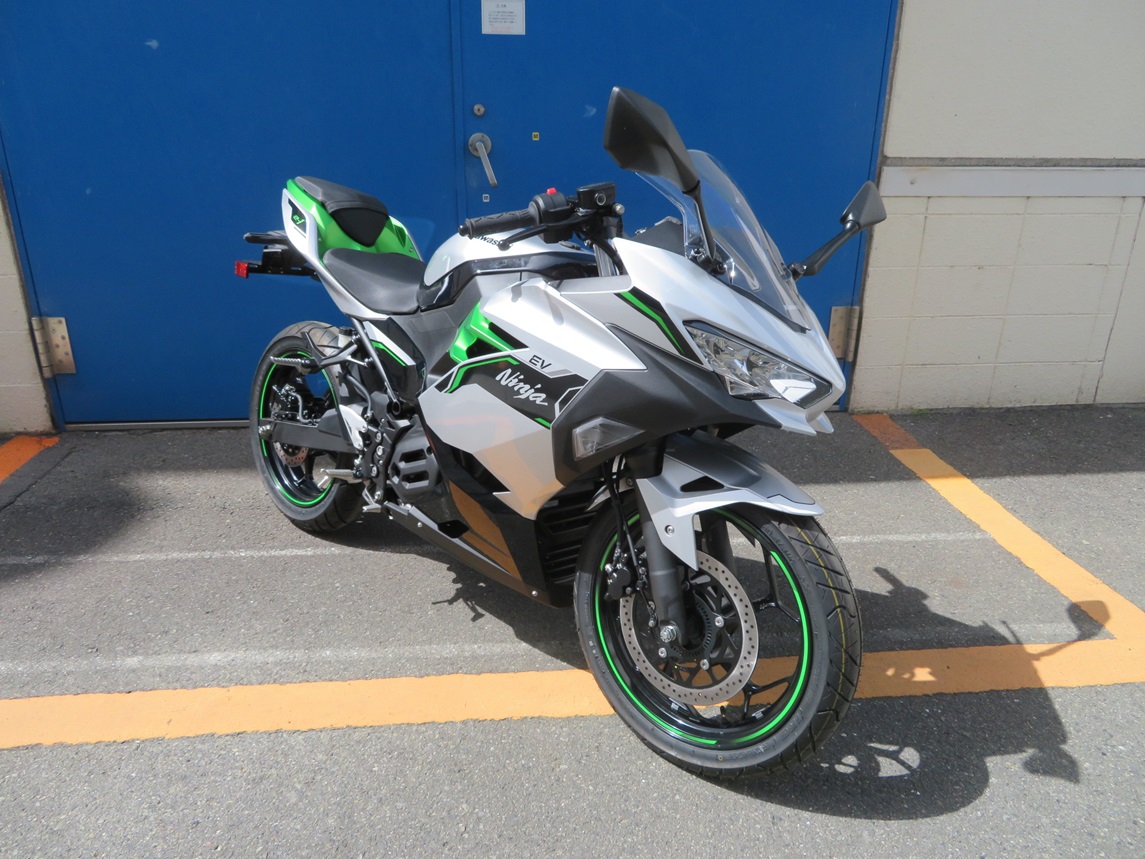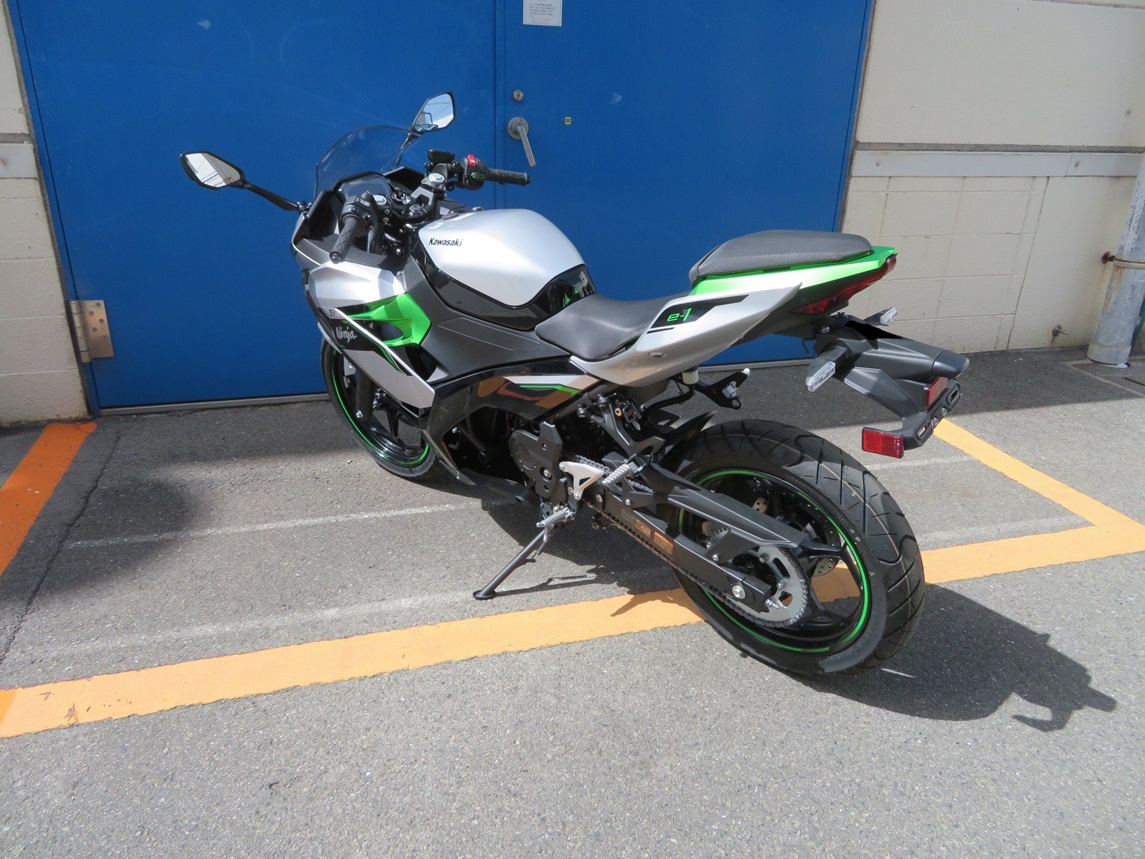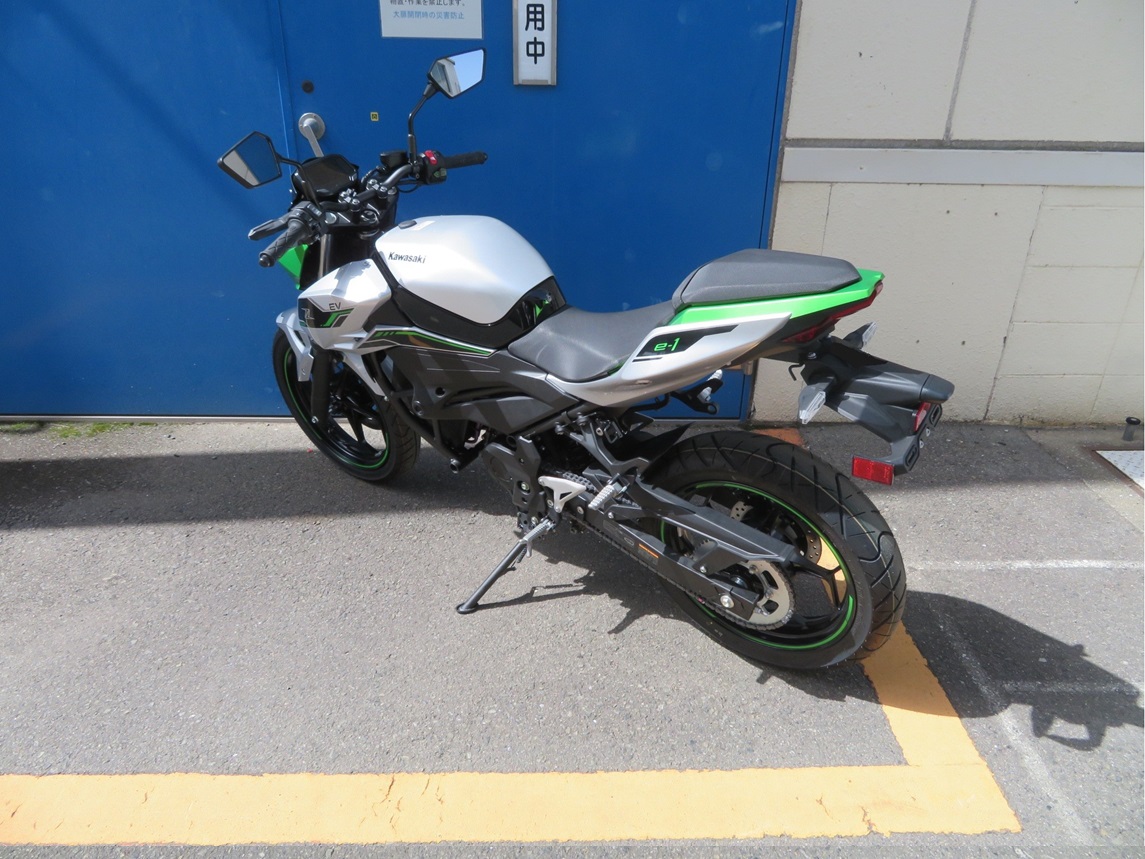Kawasaki Ninja e-1 and Z e-1 type-approved for Australian sales
Kawasaki’s first mass-production electric motorcycles were shown last year in the form of the Ninja e-1 and Z e-1 but the company’s lips have been sealed when it comes to releasing specifications for the bikes. Now the key information has emerged thanks to type-approval documents that also confirm they’ll be offered in the Australian market.
Both bikes are built around the same motor and chassis and visually they’re identical to the prototypes shown last year, only gaining small ‘e-1’ stickers on their tails that confirm their names (previously the bikes have been widely referred to as the Ninja EV and Z EV, but those titles don’t provide for additional models to expand the range in the future).

Prototype Ninja EV
The new Ninja and Z models are both powered by a 9kW electric motor, according to their type-approval info, with electricity stored in lithium-ion batteries. There’s no word on the size of those batteries, but they’re believed to be removable to allow them to be charged indoors or swapped for fully-charged ones if a suitable battery-swap network can be created.

Using small, swappable batteries helps keep the bikes’ weight and dimensions down. The two Kawasakis each have a wheelbase of 1370mm, exactly matching the existing Ninja 400 and Z400, which provide the basis of the electric models’ chassis and bodywork – helping keep costs down even if the electric versions are initially made in quite small numbers.

The electric bikes might be down on power compared to the Ninja 400 and Z400, in fact, they’re much closer to the Ninja 125 and Z125, but they’re also far lighter. At 135kg for the Z e-1 and 140kg for the Ninja e-1, they actually undercut not only the 400cc bikes that donate their frames but also the smaller 125cc petrol-powered models.

Other details revealed in the type-approvals include the width – 730mm for the Z e-1 and 690mm for the Ninja e-1 with its narrower, lower bars – and the tyre sizes, with 100/80-17 rubber at the front and 130/70-17 at the rear on both models.
With type-approval complete, the bikes look set to be ready to go on sale before the end of 2023.

Ben Purvis